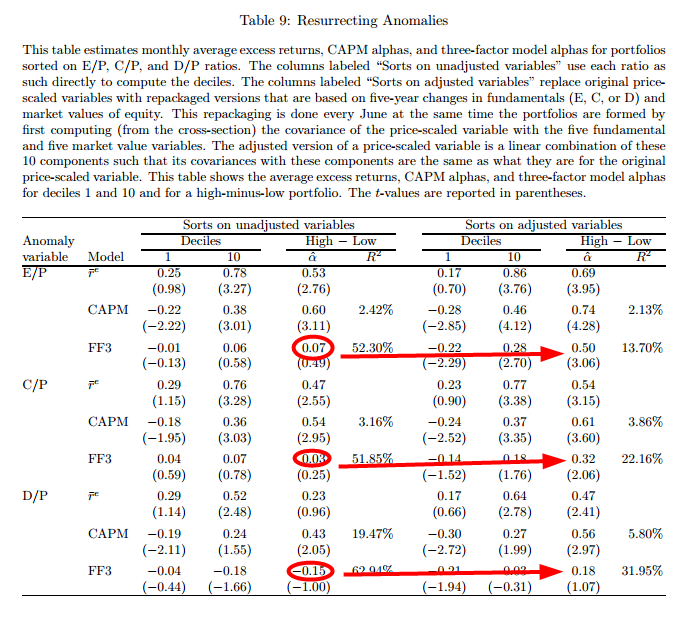Gerakos and Linnainmaa have a new paper out:
http://papers.ssrn.com/sol3/papers.cfm?abstract_id=2083166 and
http://www.asb.unsw.edu.au/schools/bankingandfinance/Documents/J.Gerakos,%20J.T.%20Linnainmaa%20-%20The%20Unpriced%20Side%20of%20Value.pdf
Here is code to perform the decomposition:
http://faculty.chicagobooth.edu/juhani.linnainmaa/ValueDecomposition.do
Summary
Book-to-market (BE/ME) ratios explain variation in expected returns because they correlate with recent changes in the market value of equity. Although the remaining variation in BE/ME ratios captures comovement among stocks, it does not predict returns. Therefore, the HML factor consists of a priced and unpriced component, leading multi-factor models to assign spurious alphas to strategies that covary with the unpriced component. Portfolio managers can exploit the unpriced component—a portfolio long the “true” and short the “false” value strategy has an annual three factor model alpha of 7.7%. The unpriced component also distorts inferences regarding known anomalies. Five-year changes in the market value of equity provide a better measure of value: they spread returns more than BE/ME ratios and are free of the unpriced component.
Some finance chart porn:

The results are hypothetical results and are NOT an indicator of future results and do NOT represent returns that any investor actually attained. Indexes are unmanaged, do not reflect management or trading fees, and one cannot invest directly in an index. Additional information regarding the construction of these results is available upon request.
Value is still an anomaly–just matters how you slice and dice it.
About the Author: Wesley Gray, PhD
—
Important Disclosures
For informational and educational purposes only and should not be construed as specific investment, accounting, legal, or tax advice. Certain information is deemed to be reliable, but its accuracy and completeness cannot be guaranteed. Third party information may become outdated or otherwise superseded without notice. Neither the Securities and Exchange Commission (SEC) nor any other federal or state agency has approved, determined the accuracy, or confirmed the adequacy of this article.
The views and opinions expressed herein are those of the author and do not necessarily reflect the views of Alpha Architect, its affiliates or its employees. Our full disclosures are available here. Definitions of common statistics used in our analysis are available here (towards the bottom).
Join thousands of other readers and subscribe to our blog.

